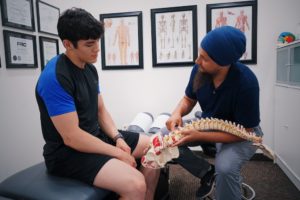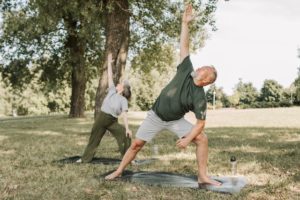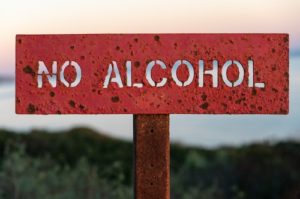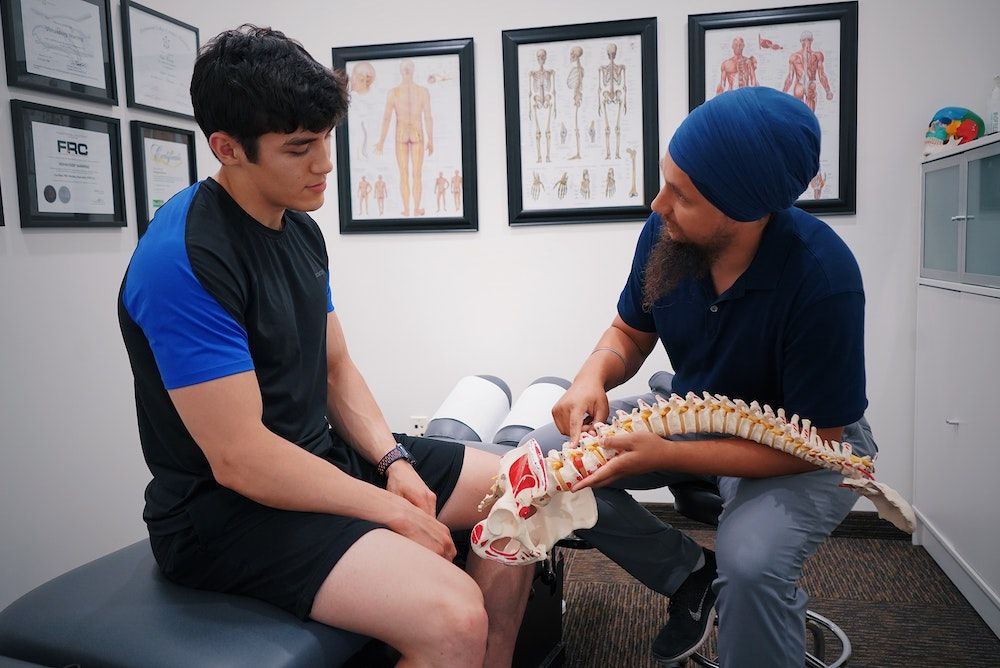What is osteoporosis?
 It is a disease of the bones.
It is a disease of the bones.
Our bones become porous in osteoporosis.
Research shows that they lose their density and therefore lose their strength.[1]
Osteoporosis and ageing are closely related.
You must have heard of someone who suffered a fracture in a minor fall.
Yes, it’s possible.
But you need not worry about it. If you know what osteoporosis is, you can take precautions to avoid its risks. Feeling relaxed, right 😊
Continue reading to avoid such a disease.
I am here to help you!
Bones give strength to our body and if our bones are stronger and denser, minor injuries do not pose any problem.
But when you have osteoporosis, your bones are weak, like crispy toast.
They can crumble with little force.
Once it happens, it is extremely painful, and your recovery is slow.
Hey, nothing to worry about.
Maintaining strong bones is important in our life which will reduce the risk of developing osteoporosis.
Osteoporosis means ‘’Porous Bones’’. When the bone becomes porous, it loses its strength and it may not support you.
If you are recently diagnosed with osteoporosis and you are worried?
Nothing to get stressed about.
You are not the only one.
Over 3 million people in the UK are affected by this disease.
The disease is more common in postmenopausal women.
Because after menopause, women have disturbed hormone levels (oestrogen deficiency) that cause a change in bone density.
Remember, if you maintain high bone density, your risk of getting osteoporosis goes very low.
Now you may ask why bones are important in our body and why they lose density.
Let me explain to you.
Why is bone health important
What affects Your bone health?
Bones give structure to our bodies.
Research shows that there are more than 200 bones of different sizes and shapes in our bodies. [2]
All these bones together make a skeleton and give a firm structure and shape to our body.
Yes, we are standing straight because of bones!
Actually, bones function like an organ.
They do many jobs in our bodies.
The simplest example is bones protect our vital organs.
You heard it right!
For example, the skull protects our brain, and the ribs protect our lungs and heart.
Bones help us in movement.
Actually, muscles are moving, but they are attached to bones via tendons and exert their force at the joints.[3]
Inside the bone, there is bone marrow which is a powerhouse of minerals.
It contains calcium, phosphate, magnesium, and many other minerals.[3]
You won’t imagine, how much calcium is there.
It is around 1-2 kg!
Fascinating, right?
Therefore, it is said that calcium-rich food is good for bones!
Now, coming back to the porosity of bones.
Let me share with you what affects your bone health.
When does osteoporosis start to develop?
Osteoporosis is a silent disease.
Research shows that the disease develops gradually, so it is called progressive disease. [4]
Osteoporosis and ageing go hand in hand; however, it starts quite at an early age.
It is a non-communicable disease.
Still, prevalence is increasing as life expectancy is increasing as per the Report on Osteoporosis epidemiology in the UK. [5]
Almost 3 million people in the UK are estimated to have osteoporosis.
THIS is a huge number.
Research shows that although it is said that osteoporosis is an old age disease, several cases are reported in children and young adults too. [6]
So, it is no more just an age-related disease.
Many factors affect your bone health.
If you do not maintain good bone health, your chances of getting osteoporosis at an early age are very high.
Several other factors contribute to this disease, like poor health habits, a non-nutritious diet, abnormal hormonal levels, smoking, lack of specific exercises, and many more.
Just to give you an example of why London people are at higher risk.
Research shows that more than 12% of smokers in the UK are from London and smocking (including passive smoking) increases your osteoporosis risk. [7]
So smoking cessation is the utmost important health priority in London.
You may not notice any symptoms at all even if the disease is there in your body.
It is a silent killer.
The worry is that you may not even be diagnosed until you get a fracture.
Keen to eliminate osteoporosis risks and start reversing your osteoporosis numbers?
Want to regain your healthy status?
It is possible!
Understanding the Risk Factors and Signs of Osteoporosis
How to Maintain Your Bone Health
Your bones are constantly changing.
Our body is continuously building bone mass, and we reach peak levels by the age of 30.
After that, bone mass decreases.
Yes, it’s an age-related decline.
If we have high bone mass at peak level, means we have a good reserve and our bones will stay stronger for a long.
So it all depends on how much bone mass we build up in our growing age.
But, if bone mass at a young age is less then it will be depleted faster and your bones will be weak sooner.
Don’t want that?
Yes, no one wants to have fragile bones.
Then what should you do to avoid it?
Is it avoidable?
Yes 😊
Want to know how?
Maintaining strong bones is the key!
Scientists have studied this disease very thoroughly and have given several recommendations to tackle it.
Let me give you an example if you have ageing osteoporosis and dental implant is advised.
It is possible now.
Science has made dramatic discoveries that made our life happy.
Based on a customised programme that covers exercises, and proper nutrition, the osteoporosis outcome could be changed; even though it may take some time, it can be done!
Let me explain to you the risk factors that may affect your bone health adversely.
Calcium intake: As I mentioned earlier, calcium is the main mineral in bone.
So having enough calcium will help you make your bones stronger.
A clinical study of more than 60,000 women has shown that an increase in dietary calcium intake reduces the risk of bone fracture.[8]
Recent UK clinical guideline for the prevention and treatment of osteoporosis has recommended having an intake of calcium (minimum 700 mg daily) preferably through diet intake or otherwise by supplementation.[9]
Physical activity: Sedentary lifestyle choice harms bone health.
A recent research study by UK scientists published in 2022 in the British Journal of Sports Medicine has concluded that exercise and physical activity help improve bone strength and the risk of falls.
This may offer benefits in the prevention and management of osteoporosis.[10]
Women and Men: Females are at higher risk of having porous bones after menopause.[3]
So, many people consider osteoporosis a disease in women.
But that doesn’t mean that men are protected.
A report by the UK consensus group says that 30% of hip fractures and 20% of vertebral fractures are seen in men.[11]
Age: Osteoporosis and ageing are directly related. It is an age-related disease.
But children and young adults can also suffer from it.
A London-based doctor has stated that malnutrition, chronic inflammation, long-term high-dose steroids, and lack of physical activity increase the risk of osteoporosis at a young age. [6]
Have you had recently a bone fracture?
Looking for rapid recovery?
BOOK YOUR FREE CONSULTATION NOW!
Hormonal imbalance: As I mentioned earlier, females in postmenopausal age are at higher risk of fragile bones.
In addition, severe untreated hyperthyroidism (high levels of thyroid hormone) also increases the risk of osteoporosis.[12]
Obesity and diabetes mellitus may also become causative factors for osteoporosis as hormone levels are changed.[13,14]
Chronic diseases: There are some medical conditions like inflammatory bowel disease (IBD or irritable bowel syndrome; IBS) and Celiac disease in which your body cannot absorb all nutrients from your diet.
This leads to vitamin and mineral deficiency which increases your risk of weaker bones.[15] Hyperthyroidism, diabetes, and obesity also increase your susceptibility to osteoporosis.
Medical drugs: Some medications may also decrease bone density.
For example, if you are consuming steroidal medicines for a long, your bones may become weak earlier.
Even some cancer medicines may also cause osteoporosis.[3]
Family history – hereditary: Sorry to say that but osteoporosis runs in family.
If any close relative of yours has osteoporosis (usually the mother), then you are at higher risk of having bones with less density.[16]
Lifestyle: Poor lifestyle choices like smoking and excessive alcohol consumption are associated with accelerated bone loss and increased risk of hip fracture.[17]
So now you can make out that a few risk factors are avoidable.
Remember that Prevention is better than cure!
Maintaining strong bones is the preventive approach for osteoporosis.
So why not practice healthy habits?
Worried about osteoporosis risks in future?
What to know more about healthy habits to avoid it?
BOOK YOUR FREE CONSULTATION NOW!
Here are some good tips that you should practice to maintain your bone health.
 Create healthy lifestyle choices in your life.
Create healthy lifestyle choices in your life.
What you eat, decides how strong your bones will be!
Eat a balanced nutritious diet rich in vitamins and minerals to avoid the developing of any deficiencies at an early age.
Your diet should fulfill your daily requirements of calcium, vitamins, and proteins.
Calcium from plant sources is considered beneficial to reduce the risk of osteoporosis.
Have plenty of green veggies, whole grains, and fortified plant-based milk in your diet.
Get your vitamin D levels checked.
If you are deficient in vitamin D, your nutritionist may suggest you a high quality supplement.
Stay physically active, muscle up, bone up, and focus on balance.
 Practice customised strength training and weight-bearing exercises to strengthen your bones.
Practice customised strength training and weight-bearing exercises to strengthen your bones.
UK consensus statement on physical activity and exercise for osteoporosis suggests taking part in activities to improve strength and focus on balance to reduce falls.
Undertake spinal extension exercises to improve posture but avoid this or practice this only under supervision if you have sciatica pain, herniated disc or any type of lower back pain.
Such exercises potentially reduce your risk of falls and fractures and pain caused by fractures.[10]
A recent study in osteoporosis patients showed that customised (assessment-based) muscle up strengthening exercises helped them to improve bone mineral density, strength, and overall functionality.[18]
But remember, in the case of osteoporosis weight-bearing exercises should be tailored according to your ability and need.
Therefore, you should consult a personal trainer expert in osteoporosis.
Limit your alcohol consumption and quit smoking.
 Avoid soft drinks. Surprised? Yes, dear, soft drinks affect your bone health.
Avoid soft drinks. Surprised? Yes, dear, soft drinks affect your bone health.
Soft drinks contain high levels of phosphoric acid.
When you consume high levels of soft drinks, it changes the calcium/phosphorus ratio in your body.
Research shows that it also disturbs the acid-base balance of the body which ultimately decreases your bone density and it is one of the cause for osteoporosis.[19]
And one more thing.
Soft drinks contain high sugar levels, so the risk of diabetes type 2 and type 1 and obesity is also increased and obesity is linked to a high risk of fractures.
UK’s #1 Personal Trainer for Osteoporosis
Now you have understood that damage from osteoporosis is irreversible.
When you get proper assessment and supervision and follow the instructions for fitness and nutrition from a personal trainer, your osteoporosis can be reduced.
Remember, age is just a number but only if you are proactive and make it so!
Osteoporosis and ageing are not absolute.
You can avoid or delay it, and also if you are suffering from it, still – 100% you can transform your quality of life.
How?
It is simple!
START with a FREE CONSULTATION NOW!
You need to have a laser-sharp customised nutrition programme, preferably rich in anti-inflammatory compounds.
An anti-inflammatory diet could help reduce the symptoms and the damage caused by the disease.
Remember!
When it comes to bone health, one diet doesn’t fit all.
Your diet for osteoporosis needs to be tailored specially for you based on your age, overall health, osteoporosis severity, activity levels, stress, gender, and symptoms.
Connect with Jazz for the osteoporosis reversal programme and forget about the disease symptoms!
Who is Jazz Alessi?
Jazz Alessi is an Elite personal trainer in London is UK’s #1 personal trainer for osteoporosis who has helped many osteoporosis patients and improved their quality of life.
What Jazz does for osteoporosis reversal?
Check it out😊
A comprehensive and professional assessment of your physical and mental health followed by a laser sharp nutrition and exercise personalisation is always the key to successful osteoporosis reversal therapy!
Even if you have ageing osteoporosis and dental implant is required for tooth restoration, just leave your worries aside.
Consult a nutrition expert who will design the laser-sharp customised osteoporosis reversal plan for your needs.
Actually, it’s not only the diet.
What you need is a comprehensive package that covers diet modification, strength training, and several changes in your lifestyle.
Jazz Alessi’s comprehensive Osteoporosis Rehab Programme will cover all the aspects to improve your bone health like,
- A varied and tasty nutrition programme for successful bone-building and maintaining strong bones
- Healthy lifestyle habits changes to slow down your bone degeneration
- Safe and very efficient exercise plan for muscle up and bone up
- Focus on balance to help you prevent falls
- Improving your posture
- Reducing your risk of falling with specific agility and ability-building exercises
- Overall weight management (weight loss if you are obese)
- A total and complete transformation of your bone health, body’s strength, stamina, and endurance.
So, no matter at what age you are suffering from osteoporosis,
Jazz Alessi, an Elite personal trainer in London is UK’s #1 personal trainer for osteoporosis who will help you find the shortest way to fix it once and for all.
Keen to fix osteoporosis, transform your health, and get started?
References
1. NHS. Osteoporosis. Available online: https://www.nhsinform.scot/illnesses-and-conditions/muscle-bone-and-joints/conditions/osteoporosis (accessed on January 23).
2. Cowan, P.T.; Kahai, P. Anatomy, Bones. PMID: 30725884. Available online: https://www.ncbi.nlm.nih.gov/books/NBK537199/ (accessed on January 23).
3. Diel, I.J. Bone health and prevention of treatment-induced osteoporosis in oncology. Journal: Supportive Oncology 2011, 438-447. https://www.sciencedirect.com/science/article/pii/B9781437710151000424
4. Compston, J.; Cooper, A.; Cooper, C.; Gittoes, N.; Gregson, C.; Harvey, N.; Hope, S.; Kanis, J.A.; McCloskey, E.V.; Poole, K.E.S.; et al. UK clinical guideline for the prevention and treatment of osteoporosis. Archives of osteoporosis 2017, 12, 43, doi:10.1007/s11657-017-0324-5. https://pubmed.ncbi.nlm.nih.gov/28425085/
5. Harvey, N.; Matthews, P.; Collins, R.; Cooper, C.; Group, U.B.M.A. Osteoporosis epidemiology in UK Biobank: a unique opportunity for international researchers. 2013, 24, 2903-2905. https://pubmed.ncbi.nlm.nih.gov/24057481/
6. Sakka, S.D. Osteoporosis in children and young adults. Best practice & research. Clinical rheumatology 2022, 36, 101776, doi:10.1016/j.berh.2022.101776. https://pubmed.ncbi.nlm.nih.gov/36109301/
7. Jackson, S.E.; Beard, E.; West, R.; Brown, J. Evaluation of the London Smoking Cessation Transformation Programme: a time-series analysis. Addiction (Abingdon, England) 2021, 116, 1558-1568, doi:10.1111/add.15367. https://pubmed.ncbi.nlm.nih.gov/33283375/
8. Warensjö, E.; Byberg, L.; Melhus, H.; Gedeborg, R.; Mallmin, H.; Wolk, A.; Michaëlsson, K. Dietary calcium intake and risk of fracture and osteoporosis: prospective longitudinal cohort study. Bmj 2011, 342. https://pubmed.ncbi.nlm.nih.gov/21610048/
9. Gregson, C.L.; Armstrong, D.J.; Bowden, J.; Cooper, C.; Edwards, J.; Gittoes, N.J.L.; Harvey, N.; Kanis, J.; Leyland, S.; Low, R.; et al. UK clinical guideline for the prevention and treatment of osteoporosis. Archives of osteoporosis 2022, 17, 58, doi:10.1007/s11657-022-01061-5. https://pubmed.ncbi.nlm.nih.gov/35378630/
10. Brooke-Wavell, K.; Skelton, D.A.; Barker, K.L.; Clark, E.M.; De Biase, S.; Arnold, S.; Paskins, Z.; Robinson, K.R.; Lewis, R.M.; Tobias, J.H.; et al. Strong, steady and straight: UK consensus statement on physical activity and exercise for osteoporosis. British journal of sports medicine 2022, 56, 837-846, doi:10.1136/bjsports-2021-104634. https://bjsm.bmj.com/content/56/15/837
11. Eastell, R.; Boyle, I.T.; Compston, J.; Cooper, C.; Fogelman, I.; Francis, R.M.; Hosking, D.J.; Purdie, D.W.; Ralston, S.; Reeve, J.; et al. Management of male osteoporosis: report of the UK Consensus Group. QJM : monthly journal of the Association of Physicians 1998, 91, 71-92, doi:10.1093/qjmed/91.2.71. https://pubmed.ncbi.nlm.nih.gov/9578891/
12. Delitala, A.P.; Scuteri, A.; Doria, C. Thyroid Hormone Diseases and Osteoporosis. Journal of clinical medicine 2020, 9, doi:10.3390/jcm9041034. https://pubmed.ncbi.nlm.nih.gov/32268542/
13. LeBoff, M.S.; Greenspan, S.L.; Insogna, K.L.; Lewiecki, E.M.; Saag, K.G.; Singer, A.J.; Siris, E.S. The clinician’s guide to prevention and treatment of osteoporosis. Osteoporosis international : a journal established as result of cooperation between the European Foundation for Osteoporosis and the National Osteoporosis Foundation of the USA 2022, 33, 2049-2102, doi:10.1007/s00198-021-05900-y. https://pubmed.ncbi.nlm.nih.gov/35478046/
14. Cummings, S.R.; Nevitt, M.C.; Browner, W.S.; Stone, K.; Fox, K.M.; Ensrud, K.E.; Cauley, J.; Black, D.; Vogt, T.M. Risk factors for hip fracture in white women. Study of Osteoporotic Fractures Research Group. The New England journal of medicine 1995, 332, 767-773, doi:10.1056/nejm199503233321202. https://www.nejm.org/doi/10.1056/NEJM199503233321202
15. Sözen, T.; Özışık, L.; Başaran, N. An overview and management of osteoporosis. Eur J Rheumatol 2017, 4, 46-56, doi:10.5152/eurjrheum.2016.048. https://pubmed.ncbi.nlm.nih.gov/28293453/
16. Bijelic, R.; Milicevic, S.; Balaban, J. The Influence of Non-preventable Risk Factors on the Development of Osteoporosis in Postmenopausal Women. Materia socio-medica 2019, 31, 62-65, doi:10.5455/msm.2019.31.62-65. https://pubmed.ncbi.nlm.nih.gov/31213959/
17. Lane, N.E. Epidemiology, etiology, and diagnosis of osteoporosis. American journal of obstetrics and gynecology 2006, 194, S3-S11. https://pubmed.ncbi.nlm.nih.gov/16448873/
18. Alonso Pérez, J.L.; Martín Pérez, S.; Battaglino, A.; Villafañe, J.H.; Alonso-Sal, A.; Sánchez Romero, E.A. An Up-Date of the Muscle Strengthening Exercise Effectiveness in Postmenopausal Women with Osteoporosis: A Qualitative Systematic Review. Journal of clinical medicine 2021, 10, doi:10.3390/jcm10112229. https://pubmed.ncbi.nlm.nih.gov/34063906/
19. Chen, L.; Liu, R.; Zhao, Y.; Shi, Z. High Consumption of Soft Drinks Is Associated with an Increased Risk of Fracture: A 7-Year Follow-Up Study. Nutrients 2020, 12, doi:10.3390/nu12020530. https://pubmed.ncbi.nlm.nih.gov/32092922/



